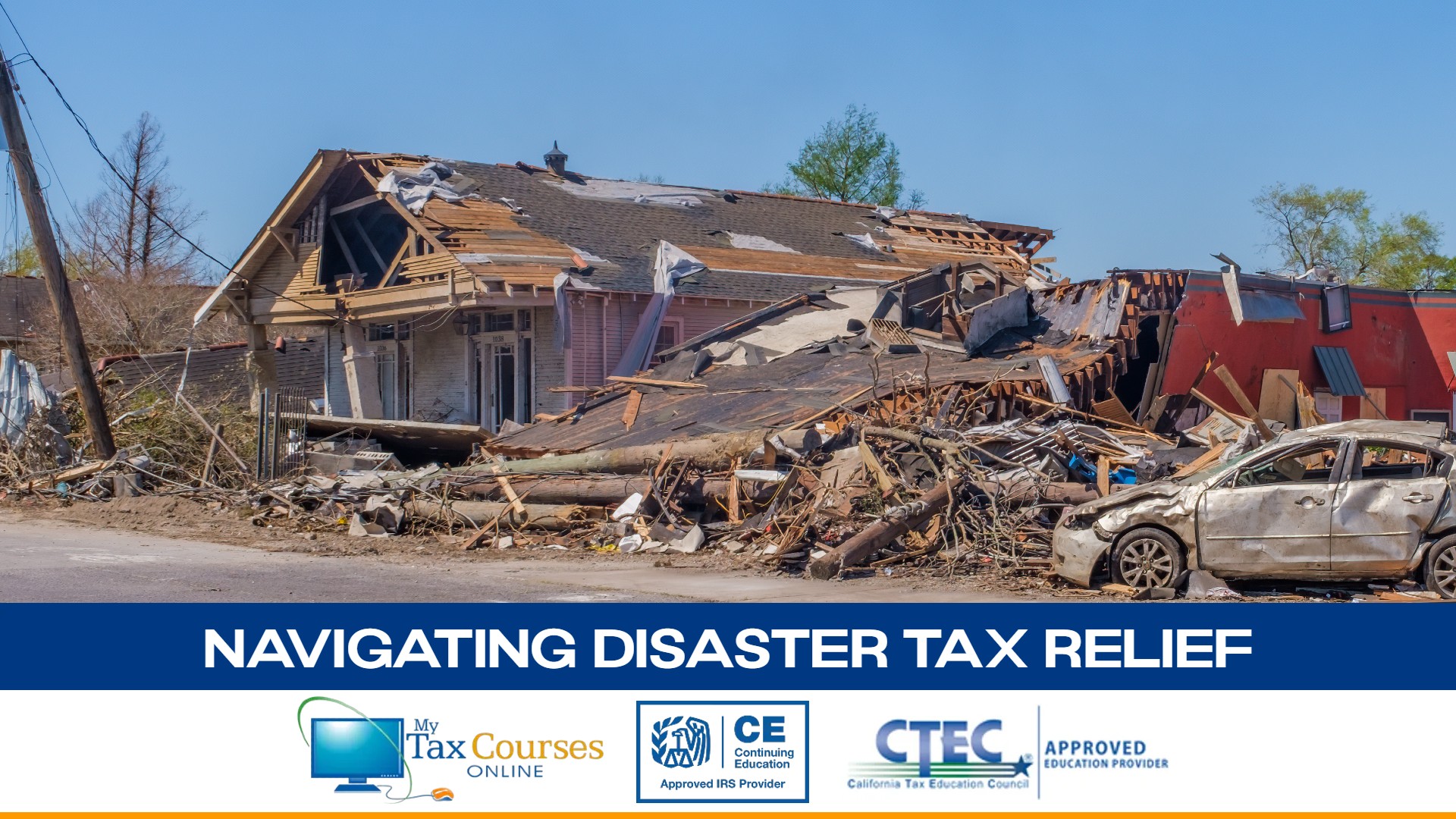In the wake of natural disasters, tax return preparers play a pivotal role in guiding clients through the complexities of disaster tax relief. Understanding the intricacies of these provisions is crucial for ensuring that affected taxpayers receive the necessary support and relief. This blog aims to provide an overview of disaster tax relief and how you, as a tax return preparer, can assist your clients in these challenging times.
Understanding Disaster Declarations
Before the IRS can provide tax relief for disaster victims, a major disaster or emergency declaration must be signed by the President. This process begins with a preliminary damage assessment conducted by the Federal Emergency Management Agency (FEMA) at the request of the governor of the affected state. Once FEMA issues a disaster declaration, identifying the covered areas for relief, the IRS steps in to provide administrative disaster tax relief and special tax law provisions.
IRS Administrative Disaster Tax Relief
The IRS automatically provides administrative disaster tax relief to individuals and businesses affected by federally declared disasters. This relief includes the postponement of filing and payment deadlines and the allowance of additional time for performing certain other time-sensitive acts. This relief is based on preliminary damage assessments by FEMA and covers taxpayers in the declared disaster areas.
For the most current tax relief provisions, it's essential to search for "Tax relief in disaster situations" on the IRS website and visit the "Around the Nation" section for news releases specific to states affected by disasters.
Who Are Affected Taxpayers?
Affected taxpayers include:
- Individuals whose principal residence is in a covered disaster area, including their spouse if filing jointly.
- Business entities or sole proprietors whose principal place of business is in a covered disaster area.
- Relief workers affiliated with government or philanthropic organizations assisting in a covered disaster area.
- Taxpayers whose necessary records to meet deadlines are maintained in a covered disaster area.
- Individuals visiting a covered disaster area who were killed or injured due to the disaster, or any other person determined by the IRS to be affected by a federally declared disaster.
Types of Disaster Tax Relief
The President can declare a major disaster for various natural events, including hurricanes, tornadoes, earthquakes, floods, fires, and other catastrophic events. The Robert T. Stafford Act provides for two types of disaster declarations:
- Emergency Declarations: These supplement state and local efforts in providing emergency services to protect lives, property, public health, and safety.
- Major Disaster Declarations: These include individual assistance declarations for individuals and households, and public assistance declarations for state, tribal, and local governments, as well as certain private nonprofit organizations.
Amended declarations can request additional counties and programs to be added within 30 days of a disaster declaration. For detailed information on declared disasters and emergencies by state, visit FEMA.gov.
Disaster Relief Resources for Individuals and Businesses
Reconstructing records after a disaster is vital for tax purposes, federal assistance, or insurance reimbursement. The IRS provides disaster loss workbooks to help taxpayers compile detailed lists of their belongings or business equipment. These include:
- Publication 584: Casualty, Disaster, and Theft Loss Workbook for individuals.
- Publication 584-B: Business Casualty, Disaster, and Theft Loss Workbook for businesses.
Taxpayers may deduct casualty and theft losses related to their home, household items, and vehicles on their federal income tax return if the loss is caused by a federally declared disaster.
Additional Disaster Relief Assistance
The IRS collaborates with various agencies to provide comprehensive assistance to disaster-affected taxpayers. Key resources include:
- FEMA: For disaster assistance and information.
- Federal Disaster Assistance website: For additional support.
- IRS2Go mobile app: For free tax help on your mobile device.
- IRS eBooks app: To view tax products on your tablet or mobile device.
- Small Business Administration (SBA): For low-interest disaster loans.
- Taxpayer Advocate Service (TAS): For unresolved tax problems.
- IRS Disaster Hotline: Call 866-562-5227 for immediate assistance.
- Ready.gov: For helpful disaster and emergency information.
Forms, Instructions, and Publications
The IRS provides numerous resources for disaster victims needing federal income tax forms, publications, and information on charitable organizations. Type "Disaster" in the search bar on the IRS website to access these resources. Publication 3067, available in multiple languages, offers comprehensive disaster-related tax relief information and is often provided at FEMA Disaster Recovery Centers.
Conclusion
As a tax return preparer, your role is crucial in helping clients navigate the aftermath of disasters. By understanding the provisions and resources available, you can provide invaluable support and ensure that your clients receive the relief they are entitled to. Stay informed and proactive, and make use of the numerous tools and resources provided to assist your clients effectively.








